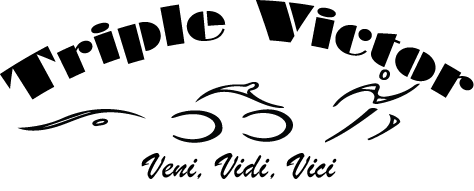Athlete Recovery
Athlete Recovery
Hydrotherapy
While hydrotherapy has become widely incorporated into post-exercise recovery regimes, information regarding these interventions is mostly anecdotal. The human body does respond to water immersion with physiological changes in the cardiovascular system and muscular systems including core temperature changes (Wilcock et al., 2006). The changes in blood flow and temperature are believed to affect inflammation, immune function, muscle soreness and perception of fatigue. The most common forms of water immersion are cold water immersion (CWI), hot water immersion (HWI) and contrast water therapy (CWT), where the athlete alternates between hot and cold water immersion. Limited studies show that hydrotherapy may be beneficial for endurance-trained athletes, particularly those performing high-intensity efforts. Specifically, CWI and CWT appear more useful than HWI for recovery from endurance exercise. The majority of studies show that hydrotherapy does not reduce inflammation or improve subsequent performance, but athletes report a decrease in muscle soreness and this mental perception of recovery lends a positive impact on the recovery process.
Studies that showed improved performance with cyclists and runners lead to these general guidelines: use appropriate temperatures with a temperatures of 10-15°C (50–59°F) for cold water and 38-40°C (100–104°F) for hot water; use cold water immersion or contrast water therapy for a duration of 14–15 min; when using contrast therapy the ratio of hot-cold water immersion is 1:1 alternating every 60 seconds for seven rotations or 14 minutes.
Active Recovery
It is not clear whether there are benefits of an active recovery between training sessions or following competition in various sports. No detrimental effects on performance have been reported following an active recovery (when compared to a passive recovery) between training sessions, along with a small amount of literature reporting enhanced performance. Many researchers, however, use the removal of lactate as their primary indicator of recovery and this may not be a valid indicator of enhanced recovery and the ability to repeat performance at a previous level (Bond et al., 1991).
A recent study investigated the effects of a swim recovery session on subsequent running performance and reported an increase in performance when compared to passive recovery (Lum et al., 2010). Well-trained triathletes completed a high-intensity running session followed 10 h later by either a swim session (20 x 100 m at 90% of 1 km time trial speed) or passive recovery. Twenty-four hours following the initial running session, a time to fatigue run test was performed. The swim trial resulted in subjects running for 830 + 98 s, compared to the passive trial in which subjects ran for 728 + 183 s. This improvement may have been due to the hydrostatic benefits of water (thought to increase venous return and blood flow) and/or the active recovery per se.
A critical aspect regarding active recovery is the timeline between subsequent bouts and muscle glycogen requirements. While low-intensity active recovery aids in the removal of lactate it additionally utilizes muscle glycogen. For this reason, when considering multi-bout competitions such as stage racing designing and timing active recovery and cool-down sessions is important.
Stretching
Although stretching is anecdotally one of the most used recovery strategies, the literature examining the effects of stretching as a recovery method is sparse. Studies show a mixed range regarding the benefit of stretching as a recovery strategy. However, two separate reviews of recovery methods concluded that there was no benefit for stretching as a recovery modality (Barnett, 2006; Vaile et al., 2010). It is important to note that to date, there have not been any detrimental effects on performance associated with post-exercise stretching.
Athletes that find they have a full range of motion and can complete their athletic movements post exercise may find no need for stretching; this is true for runners where increased leg stiffness increases running economy. However, for athletes that require heightened flexibility such as ankle flexibility in swimming may find increased performance benefits from planned stretching sessions even if there is no direct correlation to recovery.
Compression Garments
Many recovery strategies for elite athletes are based on medical equipment or therapies used in patient populations. Compression clothing is one of these strategies that has been traditionally used to treat various lymphatic and circulatory conditions. Compression garments are thought to improve venous return through the application of graduated compression to the limbs from proximal to distal (Bochmann et al., 2005). The external pressure created may reduce the intramuscular space available for swelling and promote stable alignment of muscle fibers, attenuating the inflammatory response and reducing muscle soreness (Kraemer et al., 2001).
Recreational runners wearing compression garments have been examined during and after intermittent and continuous running (Ali et al., 2007). The authors found that there was a reduction in delayed onset muscle soreness 24 h after wearing compression garments during a continuous exercise task (10 km). While not statistically significant, there was a trend for participants in the compression trial to perform the 10 km in a faster time than when not wearing the compression garments. Subjects wore commercially available graduated compression stockings, with the compression highest at the ankle (18-22 mmHg) and reduced by 70% to the top of the stocking, which ended below the knee. Recently, a reduction in the perception of muscle soreness after wearing compression garments during sprinting and bounding exercise and for 24 h after exercise was reported (Duffield et al, 2010). While perceptions of soreness were reduced, there was no change in sprint performance while wearing the garments.
While there is currently minimal research into compression garments and recovery for endurance athletes, the small amount of data suggests that there may be some small benefits and there is no indication that they impede the recovery process (Hill et al., 2013).
Massage
Massage is a widely used recovery strategy among athletes. However, apart from the perceived benefits of massage on muscle soreness, few reports have demonstrated positive effects on repeated exercise performance. Furthermore, increased blood flow is one of the main mechanisms proposed to improve recovery (thus improving the clearance of metabolic waste products). However, many studies reported no increase in blood flow or lactate removal during massage (Monedero & Donne, 2000, Tiidus & Shoemaker, 1995). Indeed, in a recent study, Wiltshire and colleagues (2010) reported that massage actually impaired blood flow and lactate removal.
Several reviews of the effects of massage have concluded that while massage is beneficial in improving psychological aspects of recovery, most evidence does not support massage as a modality to improve recovery of functional performance (Barnett, 2006; Weerapong et al., 2005). However, athletes can incorporate massage into their training program as it may have potential benefits for injury prevention and management; when using massage in this manner program it as a workout vs. recovery as some massage and manual manipulation modalities such as deep tissue or Graston require soft tissue recovery of their own.
Summary
With the limited scientific research on the area of recovery, many of the current recommendations used are general guidelines. One aspect of the research that is clear is that protocols both pre, during, and post exercise that makes an athlete feel “good” help to increase testosterone and performance. It is important that athletes experiment with a variety of strategies and approaches to identify the recovery options that work best for each individual; what makes one athlete feel good may not have the same benefit for others. Finding the optimal recovery from training and competition for each individual can provide benefits for performance. Recovery strategies to consider include hydrotherapy, low-intensity active recovery, massage, compression garments, pneumatic compression equipment (recovery boots), stretching or various combinations of these methods. What science has shown is no matter the individual recovery protocols selected priority is optimal post-exercise nutrition and adequate sleep to maximize recovery and reduce fatigue from exercise.


